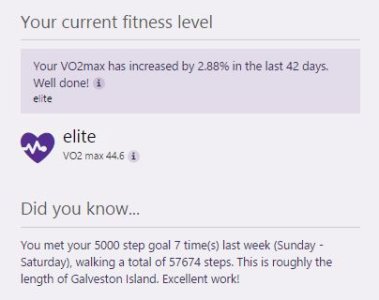Spartacusds
New member
I workout 6 days a week and still no reading for VO2 Max nor a fitness level. Has anyone been able to verify that we have to do a run or a bike ride for this feature to work? I lift and do Crossfit so I only use the workout button. My HR goes up into the 180's during a crossfit workout so I know it's rather intense, yet still no reading. I have never gotten a 1 or 2 min cool down notification.




